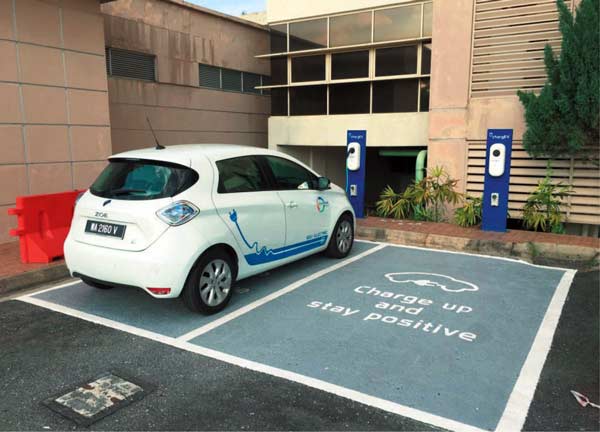The popularity of electric vehicles (EVs) is destined to grow in the future. One of the factors holding consumers back, however, is the availability of EV charging stations.
Although the number of charging stations is growing, particularly along highway routes between major centres, gas stations in North America continue to out-number recharging stations by at least seven-to-one, according to some sources. There’s increasing interest to build more charging stations — utilities want to sell more electricity; automakers are looking to sell more electric cars; and regulators would like to take gas-powered vehicles off the road. Yet the responsibility for EV charging on a nationwide basis is neither clear nor unified.
Commercial building developers and planners have an important role to play. In fact, the case for including EV charging stations in high density residential and commercial developments is compelling. After all, not every owner of an electric vehicle has a garage to house their own personal recharging station.
According to the Clean Air Partnership, a charitable environmental organization based in Toronto, “an estimated 54 per cent of non-residential parking occurs at the workplace where layover is around four to eight hours daily (Tomic and Bloch-Ruben, 2014). Therefore, providing workplace EV charging can be an effective and feasible strategy to support and accelerate the transition to sustainable low carbon transportation options.”

In their report, Creating an Effective Workplace Electric Vehicle Charging Policy, authors Louis Coningsby and Kevin Behan suggest that providing EV charging can also be a tool for companies to recruit and retain employees, companies which ultimately rent or lease the space that developers create. Including EV charging in projects also enhances a developer’s image with an ever-aware public and can contribute to LEED certification.
There is a capital cost to installing EV charging stations, of course, although not as much as might be expected. Costs for Level 1 and Level 2 charging stations range from $700 to $7,000, according to the U.S. Department of Energy’s Office of Energy Efficiency and Renewable Energy. These levels are normally adequate for drivers who can leave their vehicles parked for a few hours. The cost of Level 3 fast-chargers, are considerably more, $50,000 or more per installation.
Some provincial incentives are available to encourage commercial EV charging station installations. Although Ontario cancelled its Plug ‘N Drive program in July 2018, British Columbia currently offers installation support of 50 per cent up to $4,000 per Level 2 station. Quebec has a similar program offering up to $5,000 per port.
Operating costs are surprisingly modest. A study by U.S.-based FirstFuel Software Inc. found that the annual cost to maintain 10 EV charging stations was less than four per cent of the energy bill for a typical 100,000 square foot commercial building. Some of this cost can, in fact, be charged back to users.
At the same time, there are issues surrounding busy commercial or high-density residential parking lots that require management action by landlords. Some vehicle owners will park their cars at a station all day, well beyond the required time to recharge. There’s also the phenomenon called ICE’ing, when internal combustion engine (ICE) vehicles use the coveted and often prime locations reserved for EV charging stations.
The Oxford Properties Group illustrates steps that can be taken to mitigate this. The company has undertaken a pilot program at one of their downtown Toronto complexes that includes highly visible marking of their EV parking spots.
Large logos and green painted walls identify stalls reserved for electric vehicles. To encourage owners to move their vehicles out of Level 2 EV stations once fully charged, Oxford charges a $5 flat fee plus 15 cents for each minute a vehicle remains parked once fully charged — double that at Level 3 fast-charging stations. Owners are notified though a mobile app when it’s time to move.
John Bleasby is a Coldwater, Ont. based freelance writer. Send comments and Inside Innovation column ideas to editor@dailycommercialnews.com.











Recent Comments
comments for this post are closed